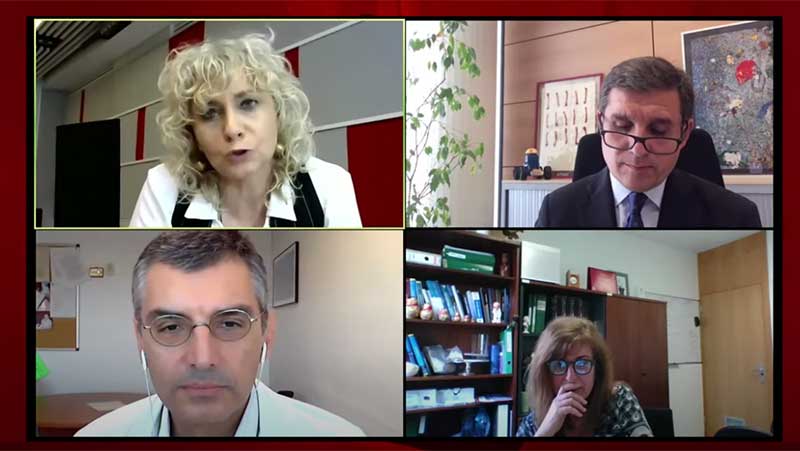Presentation of the results of the 2014 Marató research on heart disease

70 teams of researchers received funding from the "La Marató de TV3 i Catalunya Ràdio" to carry out 43 projects focussed on the prevention, diagnosis and treatment of heart disease, five of which were undertaken at Germans Trias i Pujol. Of these projects, at least two have already moved into clinical pratice, such as is the case of lung ultrasound scanning and bioimplants to reduce scaring after heart attack.
In an online symposium, due to the exceptional circumstances, the results of the intense research activity on heart disease, funded by the 11.4 million euros raised in the 2014 edition of the fundraising campaign of TV3 and Catalunya Ràdio were presented. The symposium was hosted by the journalists Mònica Terribas and Síliva Cóppulo, presenters of the La Marató 2014 on televison and radio respectively.
After the welcome from the director of the Foundation, Lluìs Bernabé, Terribas chaired a round table with two of the 43 researchers awarded grants in the 2014 Marathon; Toni Bayés-Genis of the IGTP and Marta Sitges of the IDIBAPS, who evaluated the impact on health of the projects carried out. See the round table here.
Bayés and Sitges consider that there have been many important advances from the research funded by the Marathon and that they have contributed to meeting the challenges in cardiovascular research. These include the discovery of new molecules, quite different from those known until now, that make innovative pharmacological treatments possible; advances in treatments and knowledge of the causes of auricular fibrillation, the commonest type of arrhythmia in the over-65s and a cause of heart attack; improvements in treatments to reduce the after-affects of myocardial heart attack; the identification of parameters to improve the detection of acute coronary syndrome and new understanding of sudden death syndrome, one of the priorities in cardiac research.
Within this group of advances, Bayés and Sitges have highlighted those results that can be applied immediately to patients, improving quality and length of life. Some examples are: the use of pulmonary ultrasound; studies of dilation of the aorta, which allows patients to be identified earlier and more precisely and the engineering of tissue to reduce scarring in heart disease. Both the study in pulmonary ultrasound and tissue engineering are two of the five projects carried out by the Heart Disease Research Group at the IGTP, the latter with very promising results.
Silvia Cóppulo presented the second part of the webinar, with a tour of the La Maratón website with all the results of the projects funded with donations to the 2014 marathon. See the videos of the researchers explaining the results of each project,

